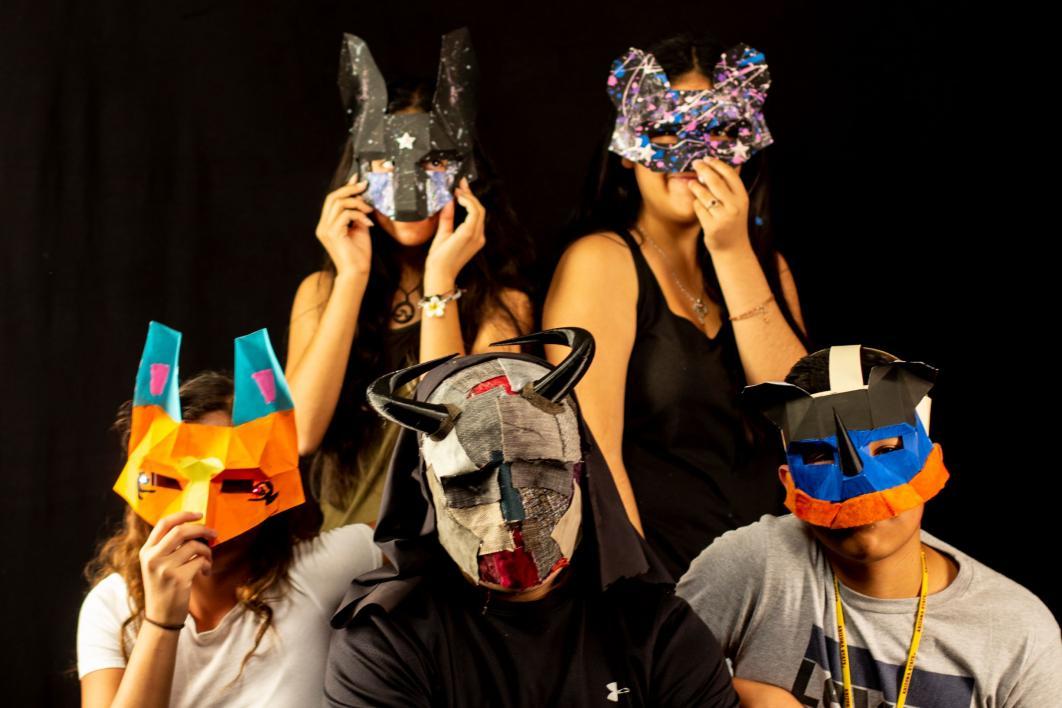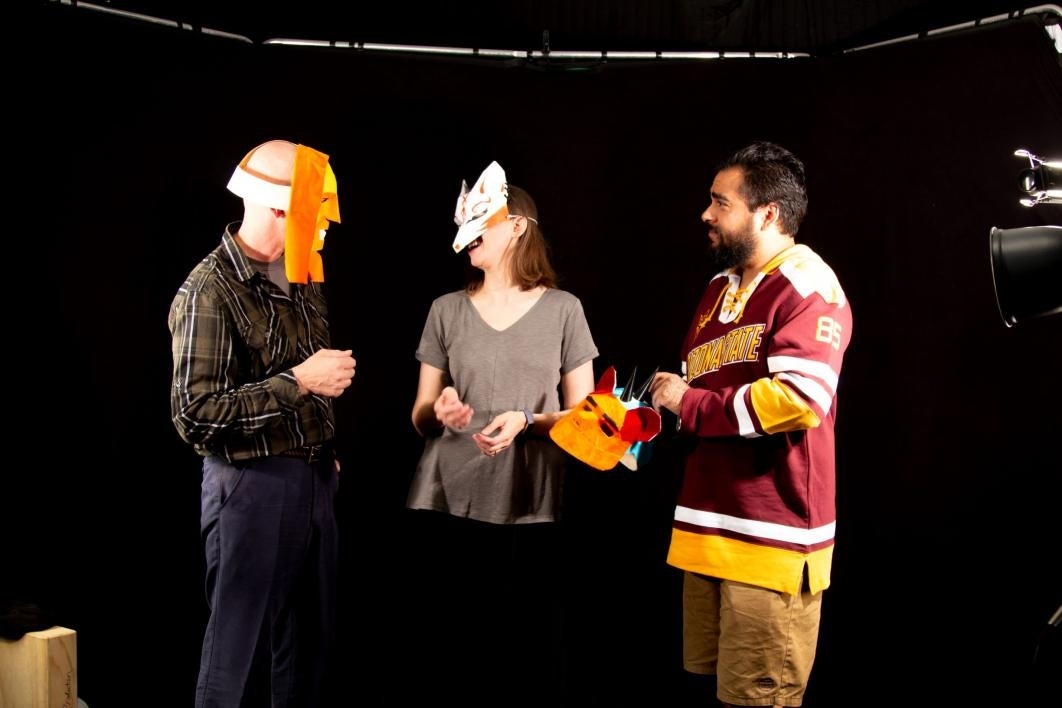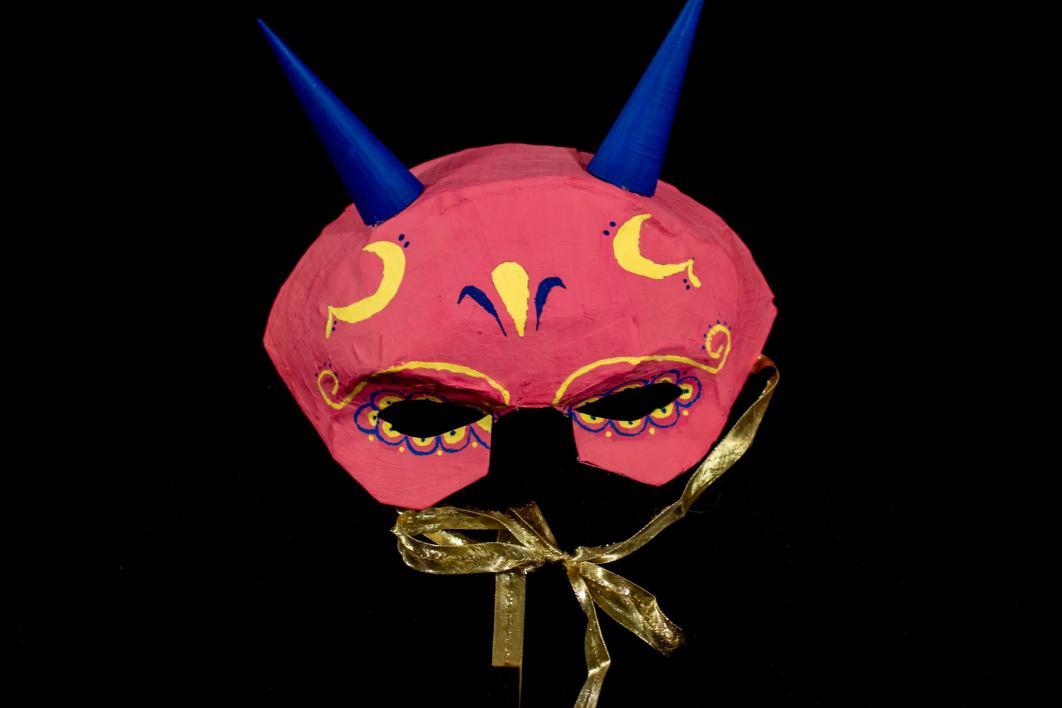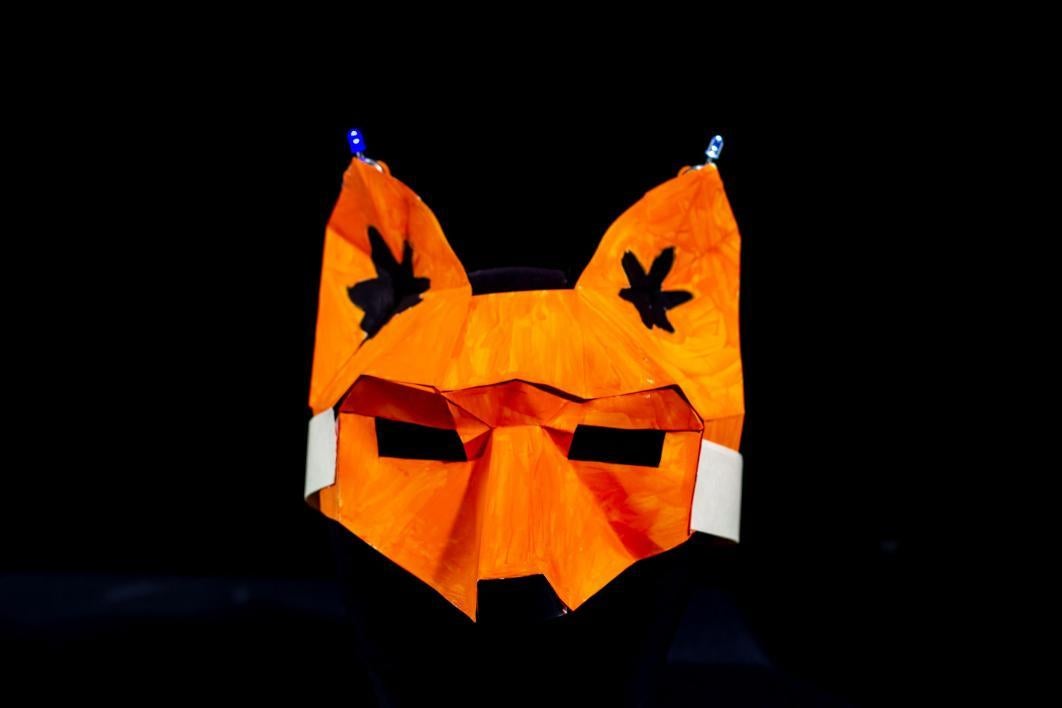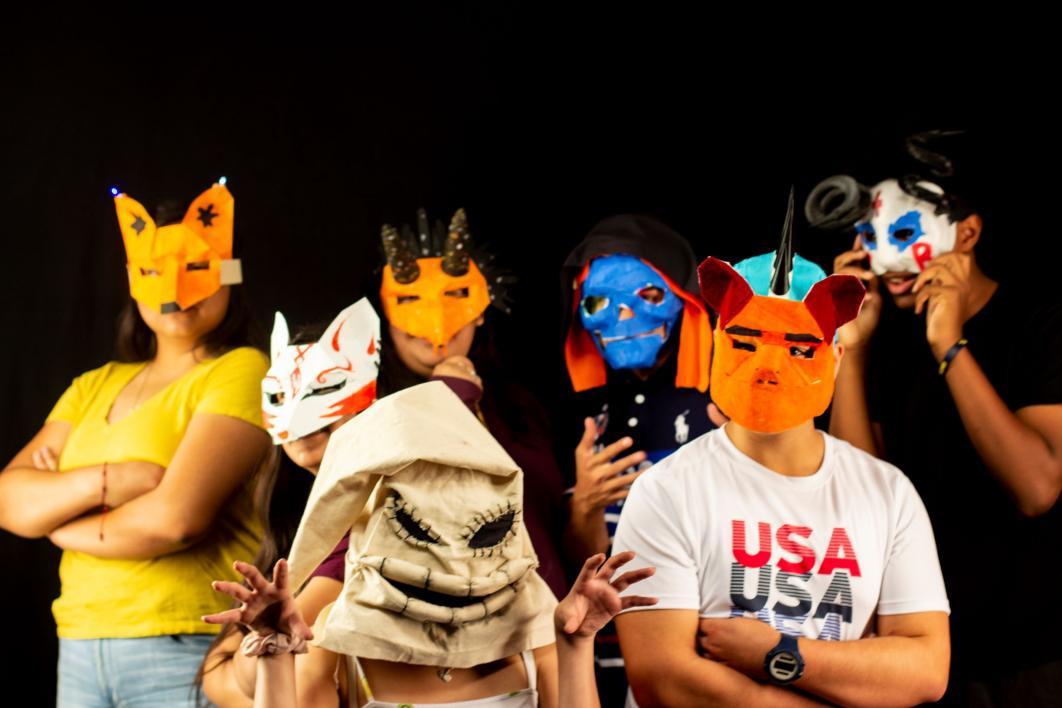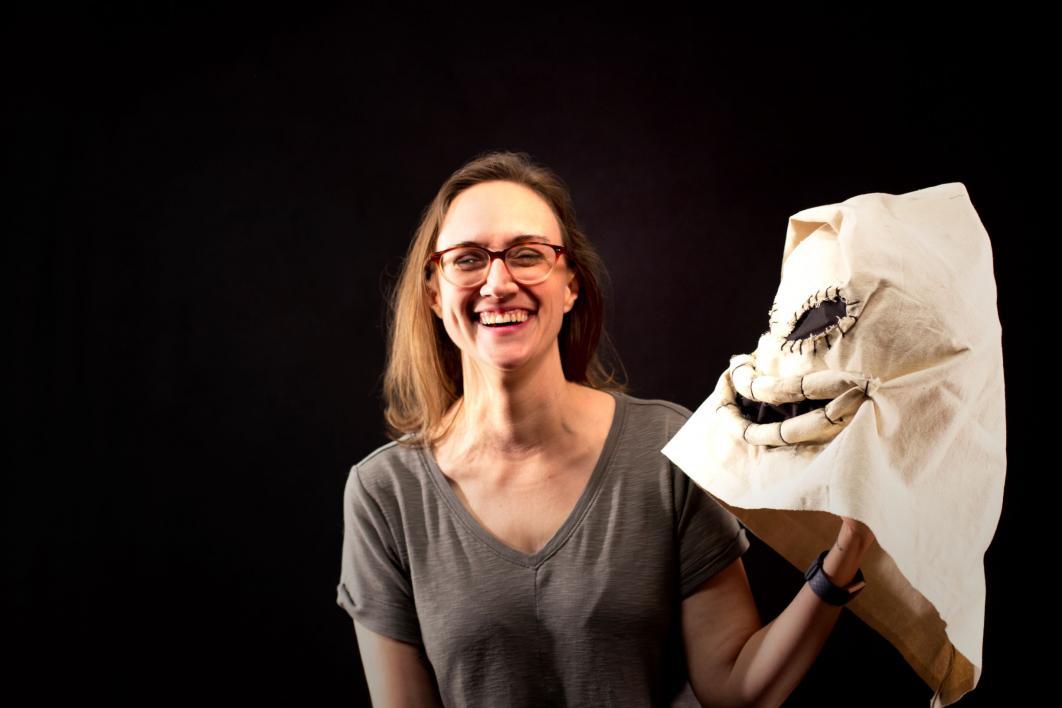Learning how to make it in the makerspace

A mask made in the Hayden Library makerspace by a student in the Upward Bound program. Photo by Kelsey Hinesley
For Jesse Lopez, the opportunity to partner with Upward Bound, a federally-funded academic program for college-bound students from underfunded communities, was a chance to pay it forward, since Lopez had once participated in the program himself.
“I came from a culturally rich but super broke L.A. community, so Upward Bound introduced me to the idea of attending college and helped me every step of the way in high school to be accepted and attend UC Santa Barbara,” said Lopez, who completed residential summer programs with Upward Bound at Harvey Mudd College and UC Davis throughout his high school years.
Now, the director of student success for the ASU Library, Lopez is working to increase academic support services for one of Arizona State University’s fastest-growing populations: first-generation students, who make up 35% of ASU’s undergraduate and graduate student population.
Lopez says partnering with Upward Bound is one way to support first-generation students by giving them the skills they need before they even enter their first year of college.
“This was the ASU Library’s second summer hosting Upward Bound, and this year we offered a curriculum based in technical literacy with a focus on coding and 3D design,” said Lopez. “A lot of these students come from schools that don’t have makerspaces or technical literacy programs, and few of them know coding or have had experience on 3D printers. What better environment for them to learn these skills and how to apply them than in the library makerspace?”
Awash with 3D prototypes, vinyl cutters, sewing kits, microcontroller kits and projects near-finished and others abandoned, the Hayden Library makerspace is truly a laboratory for learning — in all of its glorious stages.
There is a lot of tinkering, and it can be messy.
“Messy learning is the best,” said Victor Surovec, coordinator of maker services for the ASU Library. “Our goal is to get everyone in here playing and having fun. When you make, you take in a lot of knowledge. You’re engaging with the material in a dynamic way, so you’re constantly having to adapt. The maker mindset is a good mindset for learning.”
Each weekday morning over the summer, between 9 a.m. and 10 a.m, the makerspace comes to life with the sounds of 27 soon-to-be high school sophomores spending a good portion of their summer vacation learning how to code and create.
During their first week of classes, the students learned how to design and build 3D paper masks.
The mask-making was led by Surovec’s fellow maker Sarah Lankenau Moench, assistant professor of costume technology in the School of Film, Dance and Theatre within ASU’s Herberger Institute for Design and the Arts, who regularly uses the library makerspace to engineer costumes and other stage materials, lead workshops and stay informed about the various free resources available to ASU students.
"Learning how to create a mask means taking a 2D design and translating that into a 3D object. It's sculpture!" Lankenau Moench said. "Masks are manageable in size and can be made with a variety of materials. They can be playful, evocative and expressive. I gave the students the option of starting with mask patterns designed by a company called Wintercroft. Having a pattern meant everyone had the opportunity to go through the process of sculpting their materials."
Under her instruction, the Upward Bounders incorporated various maker technology into their masks. Some students layered on digital elements, such as lights, fans and thermostats. (“If their mask gets to a certain heat, their fan will automatically turn on,” said Surovec.) While others devoted more time to painting their mask.
"It is so inspiring to come back several weeks later and see the explosion of creativity that came out of each student reflected in their masks," Lankenau Moench said. "The maker movement has made it possible for anyone to discover their inner artisan."
At the end of the program, each student took home the mask they designed and made, along with their very own Arduino electronics starter kit — a tool that both Surovec and Lopez say they hope will get used often.
“Giving them each an Arduino kit to take home is a way of continuing to provide them the access and opportunity needed to master the skills they learned here,” Lopez said. “They can keep applying them to new projects.”
Surovec added, “Working on a project can be an incredible motivator for learning.”
More Arts, humanities and education

ASU professor's project helps students learn complex topics
One of Arizona State University’s top professors is using her signature research project to improve how college students learn…

Award-winning playwright shares her scriptwriting process with ASU students
Actions speak louder than words. That’s why award-winning playwright Y York is workshopping her latest play, "Becoming…

Exceeding great expectations in downtown Mesa
Anyone visiting downtown Mesa over the past couple of years has a lot to rave about: The bevy of restaurants, unique local shops…


